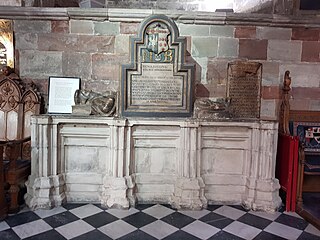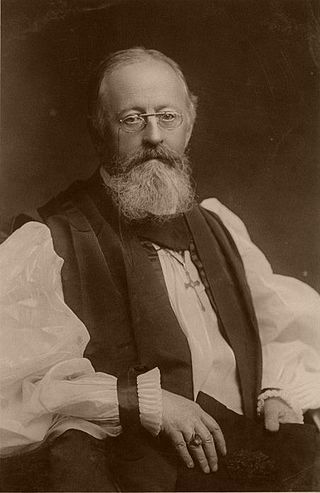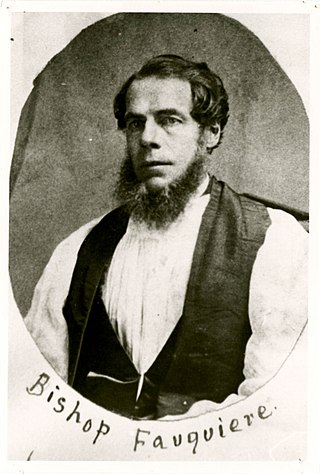
Peter des Roches was bishop of Winchester in the reigns of King John of England and his son Henry III. He was not an Englishman, but rather a native of the Touraine, in north-central France.

Nicholas Bullingham was an English cleric who became the Bishop of Lincoln and Bishop of Worcester.
The Dean of the Chapel Royal, in any kingdom, can be the title of an official charged with oversight of that kingdom's chapel royal, the ecclesiastical establishment which is part of the royal household and ministers to it.
Jocelin of Wells was a medieval Bishop of Bath. He was the brother of Hugh de Wells, who became Bishop of Lincoln. Jocelin became a canon of Wells Cathedral before 1200, and was elected bishop in 1206. During King John of England's dispute with Pope Innocent III, Jocelin at first remained with the king, but after the excommunication of John in late 1209, Jocelin went into exile. He returned to England in 1213, and was mentioned in Magna Carta in 1215.

William Walsh was a Prebendary of St Paul's Cathedral, Bishop of Mauritius and Dover. At the end of his life he was Archdeacon of Canterbury. While he was Bishop of Mauritius, the island experienced one of its worst cyclones; in consequence his cathedral had to be used temporarily as a hospital.

John Fielder Mackarness was a Church of England bishop.

John Kaye was a British churchman.

Henry Mackenzie was Bishop of Nottingham from 1870 until 1877. He became the first suffragan bishop in the Church of England since 1608.

James Atlay was an English churchman, Bishop of Hereford from 1868 to 1894.
The Archdeacon of Colchester is a senior ecclesiastical officer in the Diocese of Chelmsford – she or he has responsibilities within her archdeaconry including oversight of church buildings and some supervision, discipline and pastoral care of the clergy.

George Murray was an Anglican bishop. He was Bishop of Rochester from 1827 until his death in 1860. He was previously the Archdeacon of Man, Dean of Worcester and Bishop of Sodor and Man.

Frederick Dawson Fauquier was an eminent Canadian Anglican priest in the second half of the 19th century.
Henry Vincent Bayley (1777–1844) was an English clergyman. Of the High Church party and a reformer, he became Archdeacon of Stow. He associated with the Hackney Phalanx group of High Church activists.
Henry Kaye Bonney D.D. was an English churchman, photographer and author.
The Archdeacon of Craven was a senior ecclesiastical officer within the Diocese of Bradford. The final archdeacon was Paul Slater.

Thomas Sharp (1693–1758) was an English churchman, known as a biographer and theological writer, archdeacon of Northumberland from 1723.
George Gresley Perry (1820–1897) was an English churchman and academic, known as a church historian and Archdeacon of Stow.
Edmund Venables was an English cleric and antiquarian.
William Arthur Dickins was Archdeacon of Bombay from 1907 until 1913.

Charles Wellington Furse, MA, JP was Archdeacon of Westminster from 1894 until his death.
This page is based on this
Wikipedia article Text is available under the
CC BY-SA 4.0 license; additional terms may apply.
Images, videos and audio are available under their respective licenses.











